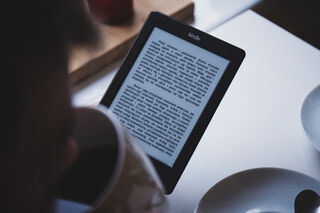Wisdom
Reading Efficiently
Making the most of this lockdown-acceptable activity.
Posted June 27, 2020

Recently, I wrote about making the most of a COVID-acceptable activity: walking. Today I turn to another: reading.
Whether for pleasure, work, health, or figuring out how to fix your toilet, amid the COVID lockdown, you may be reading more than ever. Here are thoughts on making the most of your reading.
In praise of the article
Especially if you Google-search to find what to read, you can easily get the distilled wisdom on a topic that the public deems most worthy. You see, Google presents search results in order of popularity, especially back-linking. Of course, the very top result may or may not be the best for you. So scan the thumbnails of the first few search results and then click on the most intriguing one. Read only the first paragraph or two and then decide whether it’s worth continuing to read, just scan headings, read just the final paragraphs, or move on to another article. Almost always, there are many more.
Making book-reading time-efficient
Usually start with an Amazon search, perhaps on your topic or a specific book’s title or author. Why Amazon? It contains nearly all of the world’s millions of books in and out of print, most of which are available used or new, in hard- or soft-cover and maybe on the convenient Kindle or audio. When in the car, I soak up much drive time listening to an audiobook.
For most books, its page on Amazon contains many reader reviews, listed in order of how many people found the review useful. What a gold mine. Sometimes, you can get the essence of the book just by reading the top review(s), which may contain a summary of the book.
Next, for most books, you can use Amazon’s “Look Inside the Book” feature to get a better sense of whether you want to buy it.
True, you could try to find the book at the library, but it’s less likely to be there, and definitely requires your getting to the library and then returning the book within a few weeks, assuming the library is open amid COVID. With an Amazon purchase, it’s at your door quickly, hassle-free, usually inexpensively, especially if you buy used, and you own it forever or until you choose to give it to a friend or donate it to a Friends of the Library.
In case you're interested, here are books I'm reading or planning to read.
So now, you own the book. Even though you’ve invested money in buying it, you haven’t yet invested any reading time. Don’t let the commitment bias pressure you into spending more time with the book than is wise. Start by reviewing the front and back covers, and if it's a hardcover, the flap blurb. Does that reinforce that you made a wise buying choice? If not, give the book away—you’ll save time that could be spent on a better-suited text or on something other than reading.
Next, scan the table of contents. Do you want to start at the book’s beginning? Just the concluding summary chapter? Just the summaries at the end of each chapter?
If you’re starting at the beginning, don’t automatically read it all. Read just the first paragraph or three and decide whether to keep reading, start scanning, or skip through what, in a how-to book, is often padding that precedes the meat. In that case, scan headings for the next intriguing section. A non-fiction book's introduction often describes each chapter’s essence. Does that make you want to flip to that chapter? If so, great. What a time-saver, and you can always return to earlier material.
Mark up your book
Don’t treat a book like a sacred object: Write in it by bracketing or yellow-highlighting sentences that you want to remember. (You can also do that on Kindle.) When you’ve finished reading what you want to read in the book, reread those highlights, perhaps rewriting them in what I call a nugget file: a Word file in which you keep all items you want to remember from your reading books or articles, from watching videos, and from conversations and musings.
The takeaway
Reading is among my favorite activities: It's peaceful, edifying, expanding. I use the aforementioned to make the most of my reading time. Perhaps it will enhance yours.
I read this aloud on YouTube.


